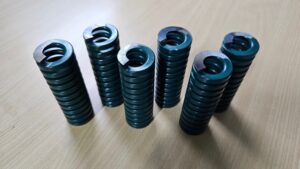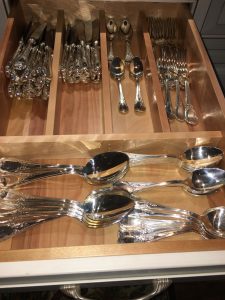The process of metal injection molding involves forcing powdered metal feedstock into a cavity mold while under pressure. This tooling mold uses two hardened dies made from steel that has been machined into the exact shape of the component. This process usually involves stainless steel alloys, but can be used with other metals as well. Metal injection molding is similar to injection molding, but uses powdered metal instead of molten plastic as a feedstock.
From this mold, the rough part undergoes a debinding process to remove any additives remaining in the metal, followed by a sintering process that strengthens it. Sometimes components made this way need to undergo surface finishing to remove marks from ejector pins, gate marks or parting lines, though this can sometimes be done in the component’s “as molded” state. When this is not sufficient, it requires more precise finishing operations.
Advantages of Metal Injection Molding
Metal injection molding allows manufacturers to make intricate metal parts from metals that are not easy to machine or cannot be die cast.
The following metals use metal injection molding techniques for component fabrication:
- Cobalt alloys
- Copper alloys
- Irons
- Low alloy steels
- Nickel alloys
- Stainless steels
- Titanium alloys
- Tungsten alloys
Due to its use of molds, this repeatable process allows manufacturers to make parts from high-temperature alloys in high volumes with a great deal of accuracy. As with plastic injection molding, it allows fabrication of complex shapes via similar tooling techniques.
Advantages of parts made through metal injection molding techniques include:
- Ability to make components with complex geometries.
- Allows tailored solutions through formulating feedstock to meet special requirements for the part and its applications.
- Easily repeatable process.
- Enables components to be brazed or otherwise joined to magnetics molypermalloy powder (MPP) materials during assembly.
- Offers excellent mechanical properties.
- Uses material efficiently, resulting in less waste.
Components made in this way are nearly fully dense, providing them with a number of useful anti-corrosion, hermetic sealing, magnetic and mechanical properties. It also makes secondary operations easier to implement, such as heat treating, machining and plating.
Surface Finishes for Metal Injection Molding
In cases where the removal of features in the “as molded” state is not sufficient, more precise material removal processes are required. To achieve a surface finish for metal injection molded parts that are larger in size, hand held finishing techniques using soft grinding wheels are commonly employed.
Generally, metal injection molding methods produce parts that have densities equaling or surpassing 97 percent of the theoretical densities of the wrought metal. They also alter mechanical properties like ductility, hardness and strength, along with the metal’s structure.
Surface finishes for components made via metal injection molding techniques typically are sintered to a mean thickness of 32 millionths of an inch (0.8128 micrometers). This enhances the part’s physical properties while also achieving a more aesthetically pleasing finish. Various other processes can then be applied afterwards.
These include:
- Chemical surface treatments.
- Grinding
- Polishing
- Tumbling
Such secondary operations can achieve mean surface finishes of 16 millionths of an inch (0.4064 micrometers). These metals can then be easily plated or surface treated without using any special preparations on the surface.
Examples of secondary surface treatments include:
- Black oxide coatings use black oxide to create a chemical coating on components that guards against oxidization and measurably lower reflectivity for parts made from copper and its alloys, ferrous metals, stainless steel and zinc.
- Chrome plating, known also as chromium plating, involves applying chromium onto a part’s surface, which involves either a thin, decorative coat or a thicker hard coat that increases durability and strength.
- Electroless nickel plating increases hardness and resistance properties in alloys, offering a simpler treatment option than electroplating.
- Electroless nickel Teflon (PTFE) plastic coatings are made from a composite of nickel and PTFE, which reduces surface friction without affecting relative hardness or cohesiveness of the coating.
- Passivation uses citric acid to remove free iron from the surface of stainless-steel parts, after which a passive film of chromium and nickel is applied to enhance the anti-corrosion properties of stainless-steel.
- Physical vapor deposition (PVD) coatings form a thin layer made from metal and ceramic through a process that involves vaporizing solid material in a vacuum, which is then deposited on a part’s surface to improve appearance, durability and functionality.
In addition to these secondary treatments, vibrating containers that use abrasive materials can be used to further smooth surfaces. This approach does not, however, remove parting lines or marks from ejector pins that sometimes occur during the metal injection molding process.
To learn more about metal injection molding and the surface finishing treatments that could benefit your application, please contact us at Silvex today!


